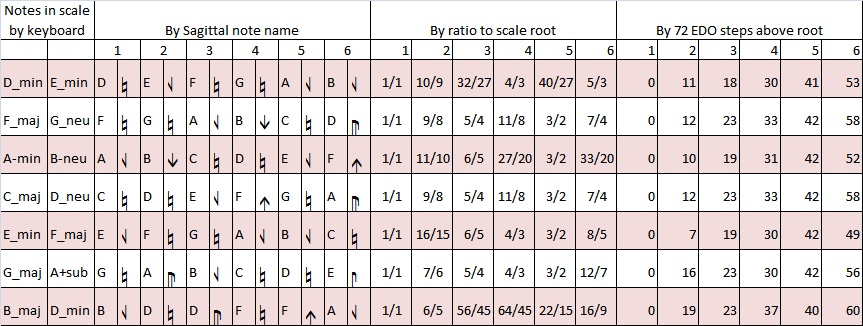This is a completed version of Guns, another in a series based on John Adams statement of the Declaration of Independence made on July 2, 1776. The piece is scored for flutes, vibraphones, baritone guitars, marimbas, and finger pianos. The tuning is based on the following six note scales in the Adams-12 subset from 72-EDO.

The piece switches between the pink and the white scales, then after a while moves to the next pair of pink and white scales, eventually ending where it began. There is a melody that is repeated with many variations, including slides, tremolo, trills, and harmonizations. With only six notes at a time, this tends towards triadic harmony in the melody. The guitars and finger pianos on the other hand have their pitches chosen using the Markov Chain Drunkard’s Walk randomizing algorithm. They chose the next note in a chord by moving either one up or one down the following list of choices:
- .one-A1 &pre-&n1..
- .one-A4 &pre-&n4..
- .one-A2 &pre-&n2..
- .one-A5 &pre-&n5..
- .one-A3 &pre-&n3..
- .one-A6 &pre-&n6..
When I need an eight note chord, I pick eight of those, and what I get is probably related by how close the notes are to each other. For example, the randomizer might pick the 2nd element of the list, &pre-&n4.., which is the fourth note in the scale. It must pick next either the 1st or 3rd element, either &pre-&n1.. or &pre-&n2.., which are either the first or second in the scale. The next one picked is dependent on the prior choice, but it could go up or down the list of choices. There is a predominance of fourth chords using this scale layout. In my last piece, Sports, I built the list of choices based on a preponderance of thirds. Fourth chords using these odd scales have a clangy effect.
Your browser may not support the audio element.
Or download here: Guns.